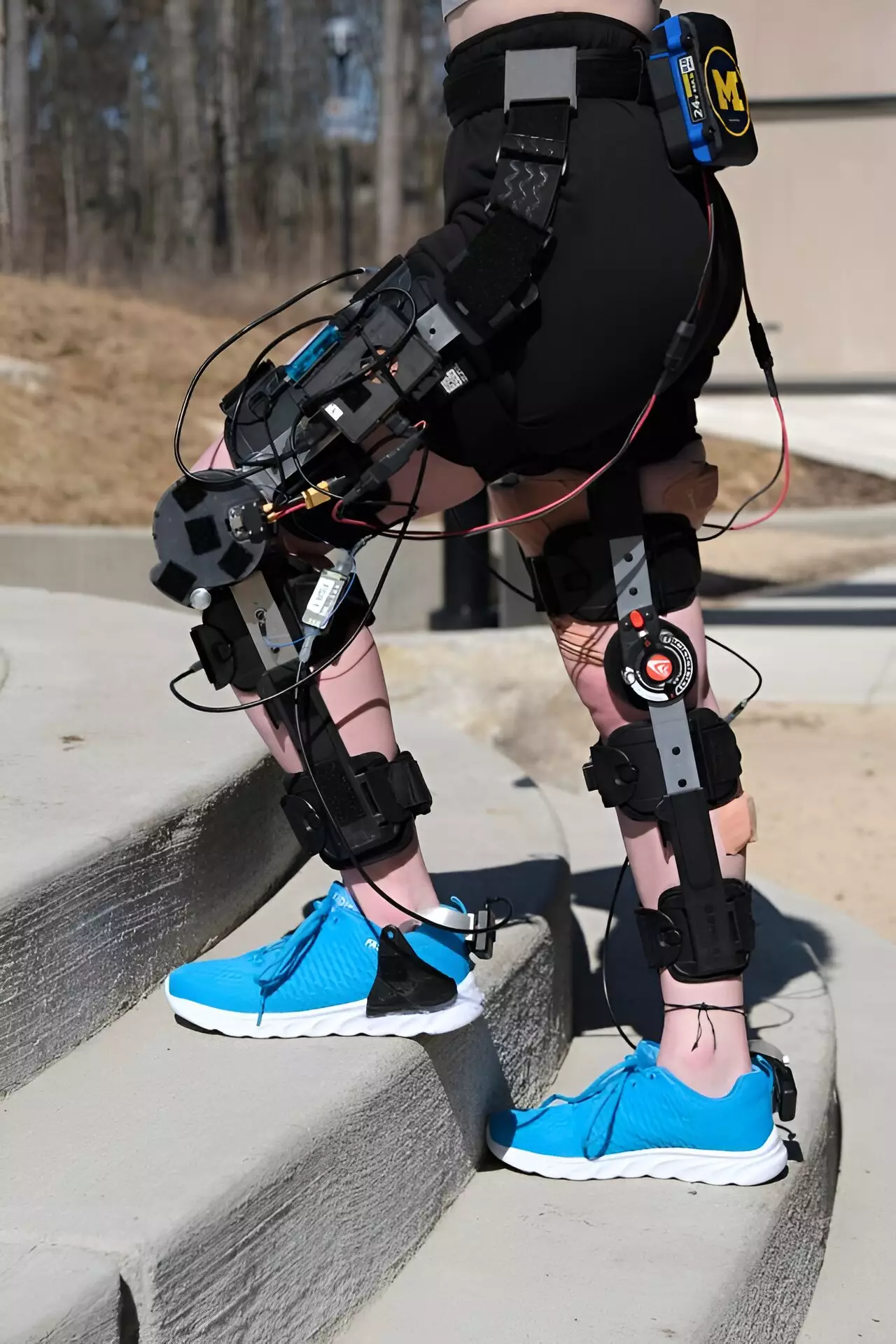The ongoing quest for enhancing workplace safety, particularly in physically demanding jobs, has led to innovative developments in assistive technology. A remarkable advancement in this realm is the creation of knee exoskeletons by researchers at the University of Michigan. These devices leverage commercially available knee braces combined with drone motors to assist workers engaged in labor-intensive tasks such as lifting and carrying. Their potential for reducing fatigue and preventing injuries offers a fresh perspective on workplace ergonomics, challenging traditional methods of injury prevention.
Currently, many workers in industries like construction and manufacturing rely heavily on back braces to support them while lifting heavy objects. However, these types of devices often compromise proper lifting techniques, potentially leading to long-term injury risks. The knee exoskeletons developed by the Michigan team take a novel approach. Rather than directly supporting the back, which can promote poor posture, these exoskeletons focus on strengthening the quadriceps, the muscles that are critical in executing a safe squat-lifting motion. This innovation presents a significant shift from the more conventional methods used today in industrial settings, where back support is emphasized despite its shortcomings.
The researchers conducted a rigorous study involving ten participants who regularly lift weights. Each participant was subjected to various tasks that mimicked real-world lifting scenarios while donning the knee exoskeletons. Tasks included lifting a 20-pound kettle bell, navigating inclines, and ascending stairs. The results were striking—those utilizing the knee exoskeletons maintained better posture and exhibited a marginal decrease in lifting speed, reducing the impact of fatigue on performance. Specifically, participants experienced only a 1% reduction in speed compared to their pre-fatigue performance, whereas those not assisted by the exoskeletons slowed down by an alarming 44%. This outcome highlights the exoskeleton’s potential to mitigate risks associated with fatigue while enabling workers to perform at optimal rates.
When fatigue sets in, workers often resort to compromised postures to maintain their productivity levels, which heightens the risk of injuries, particularly back strains. The knee exoskeletons serve a dual purpose: they provide essential physical support and encourage the maintenance of proper lifting form. As noted by Nikhil Divekar, a postdoctoral research fellow, preventing back injuries is not simply about providing support but ensuring workers can lift safely and maintain productivity simultaneously. This revelation is crucial as it suggests that integrating such technologies into regular practices could lead to longer careers and fewer healthcare costs associated with workplace injuries.
One of the standout features of these knee exoskeletons is their design, which prioritizes both usability and mobility. Equipped with cutting-edge motors, the exoskeletons allow users to move their knees freely, mimicking their natural gait. This is pivotal, as cumbersome devices can hinder rather than help. The technology behind these exoskeletons includes sophisticated software that evaluates the user’s leg movements in real-time, adjusting assistance based on knee angles and the dynamic forces at play. Such precision ensures that the device responds seamlessly to the user’s actions, a significant improvement over exoskeletons that operate on fixed patterns and struggle to adapt to sudden changes in motion.
While the prototypes of the knee exoskeletons boast a price tag of around $4,000 per pair, the researchers speculate that mass production could reduce this cost to approximately $2,000. As the team moves forward with securing patent protection and seeking commercial partnerships, the practical application of this technology appears promising. By potentially revolutionizing how industries approach lifting safety, these knee exoskeletons could play a vital role in shaping future workplace standards.
The development of knee exoskeletons at the University of Michigan represents a significant leap in addressing the challenges of fatigue and injury in labor-intensive professions. By shifting the focus from back support to strengthening leg muscles, this innovative technology emphasizes the importance of proper lifting techniques while maintaining productivity. As industrial demands grow, investing in such advancements not only enhances worker safety but also promotes a healthier workforce in the long run. The future of workplace ergonomics is bright, with the potential to transform lives and redefine industry practices.


Leave a Reply